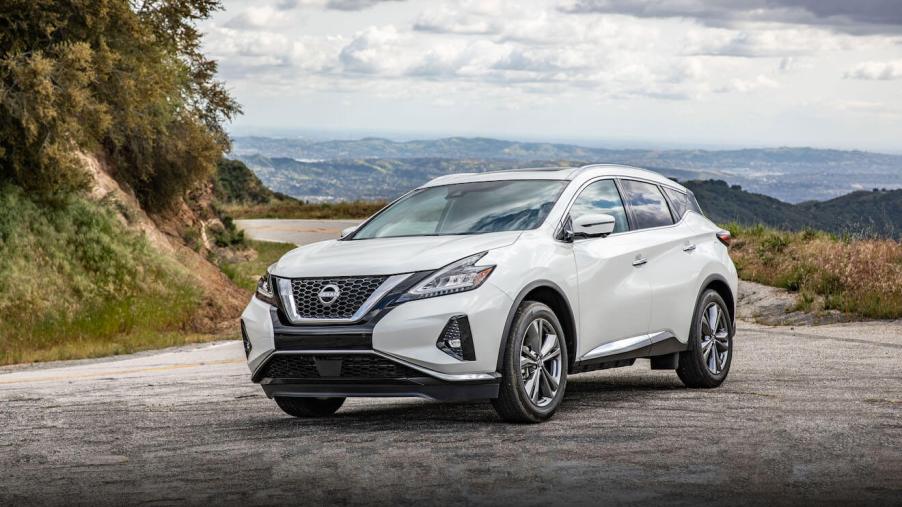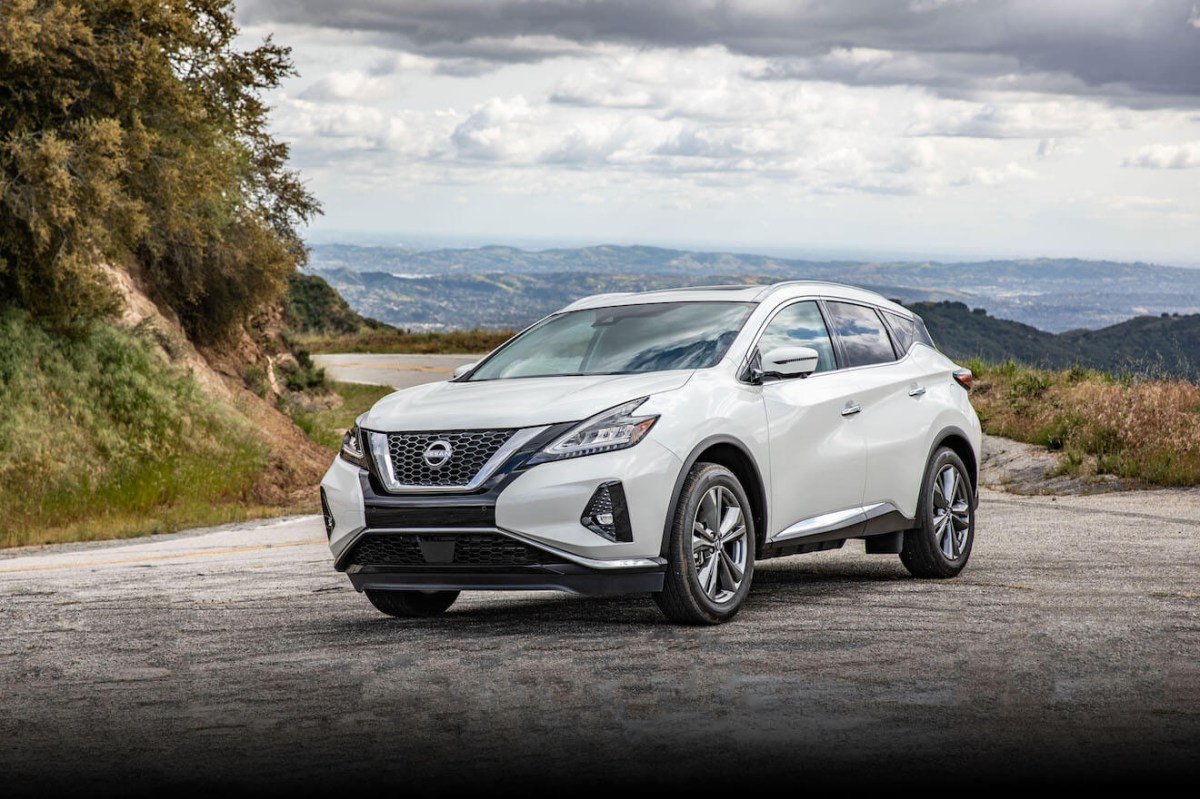
The 2021-2023 Nissan Murano Got the Worst Grade on an Updated Safety Test
The Nissan Murano is a midsize SUV with a strong engine, high-tech interior, and unique styling. The Murano stands out from the crowd among a sea of mundane sport utility vehicles. And although it generally receives good safety ratings, it falls short in the new Insurance Institute for Highway Safety (IIHS) moderate overlap front test.
The recently updated IIHS moderate overlap front test adds rear seat safety to frontal collision crash testing. That caused many vehicle issues, compelling manufacturers to update their rear seat safety measures.
Let’s explore the new moderate overlap front test and how the 2021-2023 Nissan Murano scored.
The new IIHS moderate overlap front test

The IIHS tests vehicle crashworthiness, passing the info along to consumers. That way, drivers can pick the safest car in the market. Additionally, IIHS car safety ratings encourage manufacturers to focus on building vehicles with excellent safety features.
As part of its testing, IIHS performs a moderate overlap front test. In the past, this measured effects on a test dummy in the driver’s seat when a vehicle collided with a barrier at 40 mph. But now, the test includes an additional dummy in the rear seat.
The IIHS modified the moderate overlap front test in response to waning rear seat safety. Though many vehicles obtained a top rating of “Good” in the prior test, their rear seat safety measures were substandard. Examples included front seats with seatbelt pre-tensioners and rear seats that didn’t have them.
In today’s revised moderate overlap front test, IIHS adds a crash test dummy in the rear seat to measure potential collision-related injuries. Sensors in the dummy tabulate injury risk to the head, neck, thigh, abdomen, or chest. Additionally, video footage and grease paint on the dummy assess restraint effectiveness in limiting movement beneath the lap belt, the head impacting the interior, and the head getting too close to the seatback.
With the more rigorous standards, many vehicles with a previous “Good” rating saw their scores fall. That could cause concern, especially among parents. It may seem that manufacturers must heavily revise vehicles to meet the new standards. But according to the IIHS, adding advanced front-seat restraints to the rear is a quick and effective fix.
How the 2021-2023 Nissan Murano scored
The 2021-2023 Nissan Murano obtained mixed results in IIHS testing. Despite receiving a “Good” rating in nearly every category, the SUV fell short in the new moderate overlap front test. Let’s go over the results.
The revised moderate overlap front test includes several ratings:
• Overall evaluation
• Structure and safety cage
• Driver injury measures
• Driver restraints and dummy kinematics
• Rear passenger injury measures
• Rear passenger restraints and dummy kinematics
The test results show—for the most part—the Nissan Murano is a safe vehicle.
The Murano earned a “Good” score in the following areas:
• Structure and safety cage
• Driver injury measures: head/neck, chest, thigh/hip, leg/foot
• Driver restraints and dummy kinematics
• Rear passenger injury measures: chest, thigh
But the Murano scored “Poor” for rear passenger injury measures head/neck and “marginal” in rear passenger restraints and dummy kinematics.
That led to a moderate overlap front test overall score of “Poor.”
The new IIHS moderate overlap front testing criteria now includes rear seat safety. As a result, many popular SUVs—including the Nissan Murano—saw a drop in rating. That might seem like a negative. But in the long term, it could lead to improved rear seat safety.



